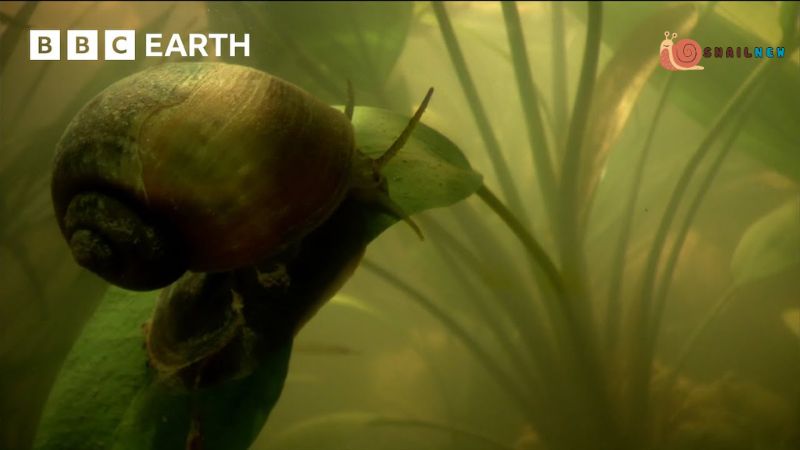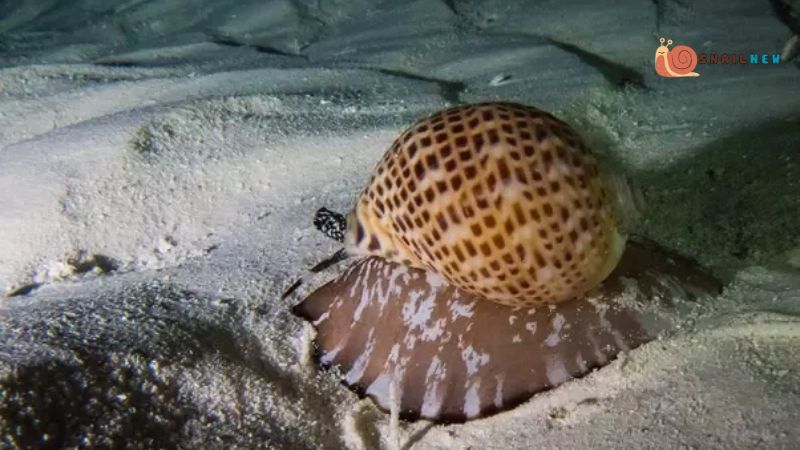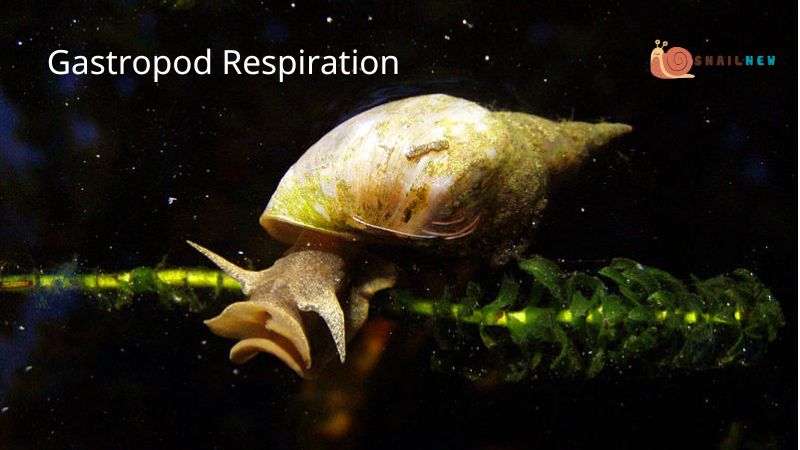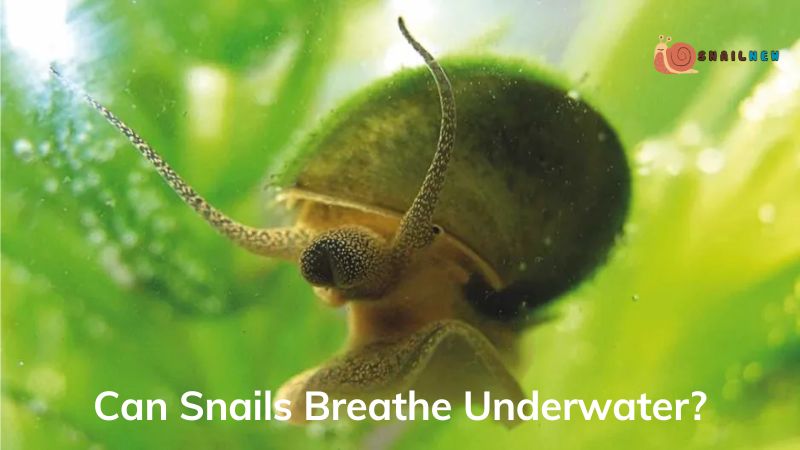In the intricate tapestry of Earth’s ecosystems, gastropods emerge as fascinating creatures, often overlooked but endowed with remarkable adaptations. Their ability to inhabit various environments, from terrestrial to aquatic, raises intriguing questions about their respiratory mechanisms. Among the inquiries from Snailnew that frequently arise is the perennial wonder: can snails breathe underwater?
Table of Contents
ToggleCan Snails Breathe Underwater?
Yes, most snails have lungs and cannot breathe underwater. They need to come to the surface to breathe air. However, there are some species of aquatic snails that have gills and can extract oxygen from water, allowing them to stay underwater for extended periods. These aquatic snails typically have adapted to their underwater environment and have developed mechanisms to extract oxygen from the water.

The Diverse Habitats of Gastropods
Gastropods, a class of mollusks encompassing snails, slugs, and sea snails, inhabit an extensive range of ecosystems worldwide. From the lush forests to the depths of the ocean, these versatile creatures have adapted to thrive in diverse habitats. While many terrestrial gastropods are well-known for their lung-like structures facilitating respiration in air, their aquatic counterparts navigate a different respiratory landscape.
Freshwater Habitats: Gills and Aquatic Respiration
Freshwater ecosystems teem with a diverse array of gastropod species, finely attuned to their watery habitats. Amidst these aqueous realms, the question of whether gastropods can respire underwater echoes through the rippling currents, igniting curiosity about the mechanisms facilitating aquatic respiration. This inquiry propels exploration into the intricacies of gastropod physiology, shedding light on the fascinating adaptations that enable these creatures to thrive beneath the surface of freshwater environments.
Among freshwater gastropods, certain species possess gills, anatomical structures optimized for extracting oxygen dissolved in water. These specialized organs enable them to respire submerged, sustaining their life in aquatic environments. As they glide gracefully through the submerged foliage, the answer to “can snails breathe underwater” becomes evident in their elegant movements.
Marine Habitats: Adaptations to Oceanic Environments
Yet, the realm of aquatic respiration among gastropods transcends freshwater habitats, extending into the saline embrace of the oceans. Marine gastropods, too, beckon us to ponder the question “can snails breathe underwater” amidst the ever-shifting tides and swirling currents of the sea.

Within the boundless expanse of the ocean, marine gastropods have undergone evolutionary adaptations tailored to their aquatic habitat. While some species feature gills akin to their freshwater counterparts, others have developed specialized structures optimized for gas exchange in seawater. These respiratory adaptations enable marine gastropods to navigate the ocean depths, embodying the intricate response to the question of whether gastropods can respire underwater. Their diverse respiratory mechanisms underscore the remarkable versatility of gastropod physiology in adapting to the challenges of life beneath the waves.
The Complexity of Gastropod Respiration
Exploring the complexities of gastropod respiration unveils the multifaceted dimensions of the question “can snails breathe underwater.” Beyond mere curiosity, it delves into the evolutionary pathways that have shaped the respiratory strategies of these mollusks. This inquiry prompts an examination of the diverse adaptations and ecological pressures that have influenced gastropod physiology throughout their evolutionary history, offering insights into the remarkable resilience and adaptability of these aquatic organisms.

Challenges and Conservation
The capacity of select gastropod species to respire while submerged highlights the extraordinary diversity of life on our planet. It stands as a testament to nature’s ingenuity, which has crafted organisms adept at thriving in diverse environments, spanning from terrestrial landscapes to aquatic realms. This adaptive prowess showcases the resilience and versatility of life forms, illustrating the intricate interconnectedness and evolutionary marvels that shape the natural world.
Scientific Inquiry and Collaboration
Amidst the challenges posed by understanding gastropod respiration, scientific exploration perseveres in shedding light on these mysteries. Researchers delve deeper into the physiological complexities of these mollusks, endeavoring to unravel the intricacies of their respiratory adaptations. Through meticulous study and experimentation, scientists strive to uncover the nuanced mechanisms underlying gastropod respiration, contributing to a deeper understanding of the remarkable adaptations that enable these creatures to thrive in diverse environments.
Conclusion
Reflecting on the marvels of gastropod respiration prompts a contemplation of the intricate interconnectedness of life on our planet. Across terrestrial forests and ocean depths, each habitat hosts its own wonders, inviting us to marvel at the resilience and adaptability inherent in all living organisms. This appreciation for the diversity of life underscores the profound interconnectedness that permeates the natural world, fostering a deeper understanding and reverence for the complexities of Earth’s ecosystems.
In the end, the question “can snails breathe underwater” serves as a gateway to a deeper appreciation of the natural world. It prompts us to explore the intricacies of gastropod respiration, illuminating the remarkable adaptations that enable these mollusks to thrive in diverse environments.
So, when you observe a gastropod gracefully navigating through the water, take a moment to contemplate the marvels of nature’s ingenuity and the intricate web of life it weaves.
Related Posts:
- Exploring the Intriguing Anatomy of Snails: Nature's…
- Exploring the Lifespan of Snails: How Long Do Snails Live?
- Can Snails Reproduce Asexually? Nature's Ingenious…
- 10 Fun Facts About Snails: Exploring the Enigmatic…
- Do Snails Have Hearts? Unveiling the Intricacies of…
- What Color Are Snails? Exploring the Colorful World…


